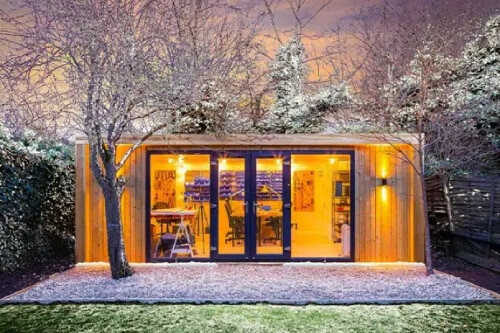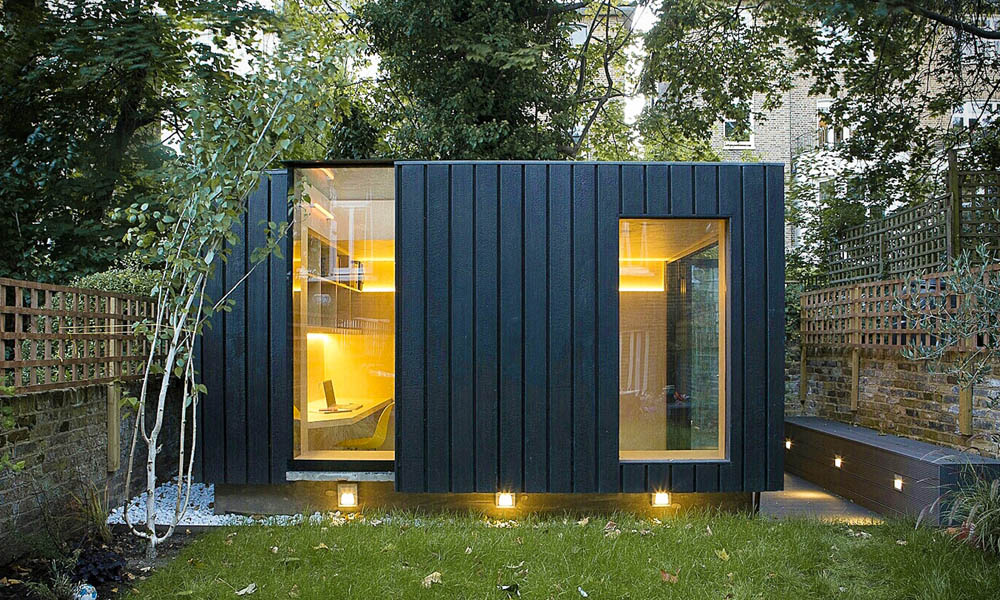The impact of highways on the requirement for a planning permit when planning to construct garden offices, conservatories and outhouses as well as garden extensions. Here are a few important aspects to take into consideration including: Sightlines, Visibility and the like.
If the new structure obstructs the view of drivers entering or exiting the building, or impacts sight lines at junctions or bends in the road, then planning permission is required. The planning authorities will determine whether the structure is a danger to the road.
Distance to the highway
Planning permission is usually required for structures built near to highways, for example extensions or front gardens. The distance between the structure and the highway is regulated to prevent any interference.
Access and Egress
Access points that are changed such as the construction of new driveways or altering existing ones to fit the new design are likely to require permission from the planner. It is crucial to make sure that all exits and access points are secure and do not hinder traffic.
Parking Facilities
Planning permission is required for any new structure that will require parking spaces or change existing ones. The authority for planning will assess whether the new development has enough parking and doesn't result in congestion of parking on the street.
Traffic Generation
Planning permission is required for developments that are likely to increase traffic, for example, gardens that are used as business offices that have clients on site. This would include a study of local traffic levels and road conditions.
Effect on Pedestrian Access
If the structure proposed is encroaching on pedestrian paths or pavements the building must be approved for planning. To ensure pedestrian safety and access, it is important to avoid blocking the path.
Impact of Construction on Highways
Planning permission could be needed if the effect of construction on roads is substantial, like temporary obstructions and large traffic. The planning authorities can establish conditions that reduce disruptions to the road system during construction.
Drainage, Water Runoff, and Runoff
The effect of the development on drainage and runoff, specifically how it affects the road is another aspect to be considered. Planning approval ensures that the structure will not create drainage or flooding problems that could negatively impact the road.
Street Furniture and Utilities
The project has to be approved if it will affect street furnishings (e.g. lamp posts or signs) or underground utilities (e.g. electrical cables or water pipes). Planning authorities will work with other agencies to solve these issues.
Highway Authority Guidelines for Compliance:
Local highway authorities have their own rules and requirements regarding developments in close the vicinity of highways. Planning permits are required to comply of these regulations to ensure road safety and efficiency.
Noise and disturbances from traffic
The new structure might cause more noise or traffic (e.g. the office that is located in the garden and has deliveries and visits). Permission for planning will be required to minimize any negative impact.
Accessibility to Public Transport
The development that will affect accessibility to public transport facilities, like stations for trains or bus stops require planning permission. Planning permission is needed for any developments that might be detrimental to public transport infrastructure like bus stops or train stations.
Highways are a major factor when deciding whether to allow planning permission for garden rooms or conservatories. It is essential to make sure that any development will not negatively impact road safety traffic flow, pedestrian safety or access. Talking with your local authority for planning as well as the highway authority early in the planning process can assist in addressing these issues and ensure compliance with all applicable laws. Check out the best garden buildings hatfield for blog info including outhouse buildings, outhouse garden rooms, conservatories and garden rooms, garden buildings , ground screws vs concrete, garden office hertfordshire, gym outhouse, ground screws vs concrete, garden out house, garden rooms near me and more.

What Planning Permits Are Required For Garden Rooms, Etc. In Terms Of Environmental Impact?
When planning to build conservatories, garden rooms, outhouses, garden offices, or extensions, taking into account the environmental impact is crucial and could determine the need for permission for planning. Here are a few of most important environmental factors that you need to consider: biodiversity, wildlife, and other natural resources.
Planning permission is required in the event that a proposed structure impacts local wildlife habitats (such as trees, hedgerows, or ponds). An ecological survey may be needed to assess and reduce the impact on biodiversity.
Habitats and species that are protected
The planning permission is required if the site contains protected species (e.g. bats, newts), or is located within or near habitats of special scientific interest (e.g. Sites of Special Scientific Interest: SSSI). To protect them, it is necessary to implement particular measures.
Tree Preservation Orders:
The planning permission must be obtained if the proposed structure involves the removal of trees or the alteration of trees protected by TPOs. The local authority can ask for a replacement plant as well as alternative mitigation measures.
Risk and Management of Flood Risk and Water Management
Development permits for areas with high risk of flooding or near bodies of water is necessary. Flood risk assessments (FRAs) are required at times to make sure the structure doesn't create flood risks and has adequate drainage.
Sustainable Construction Practices
Planning permission may be needed to ensure sustainable materials and construction methods. It is essential to take into consideration the energy efficiency of the products, the insulation they provide and their carbon footprint.
Drainage and Surface Water Runoff:
Environmental concerns include the effect of a new structure on surface water runoff and drainage. The planning permission permits the construction of drainage systems that prevent flooding and logging of water.
Soil and Land stability:
If the proposed construction will impact soil quality or land stability Planning permission is required. Planning permission is needed if the construction could alter soil quality or land stability.
Air Quality
Planning permission is required for developments which could affect local air quality such as those located near industrial areas and major roads. It ensures air pollution levels remain within acceptable limits, and that mitigation measures are implemented.
Noise Pollution:
Planning permission could be needed if a proposed garden room use could cause a significant amount of noise. The local authority will evaluate the noise level, as well as potential impacts on neighbors as well as the surrounding environment.
Waste Management:
Effective waste management in both construction and after, is essential. Planning permission provides adequate facilities for recycling and waste management to reduce the environmental impact.
Energy Efficiency
Planning permission may be accompanied by requirements for energy efficient technologies including solar panels, for example. high-performance glazing. This can reduce the environmental footprint.
Environmental Regulations
Developments must be in compliance with national and local environmental regulations, such as the UK Environmental Protection Act. Planning approval assures that all standards are met, in addition to the development being sustainable for the environment.
The planning permission granted for garden rooms, conservatories and outhouses must also take into consideration a broad variety of effects on the natural environment. It is important to consult with local authorities early on in the process of planning so that you can understand the specific requirements. This will ensure that the building is eco-friendly and complies with all relevant laws. Have a look at the best underground garden room for blog info including what size garden room without planning permission, outhouse builders, garden outhouse, luxury outhouse, composite garden rooms, my outhouse, outhouses for garden, outhouse builders, herts garden rooms, luxury outhouse and more.

What Kind Of Planning Approval Is Required For Your Garden, Rooms, Etc.?
If you are planning to construct a conservatory, garden room, outhouses (garden offices) or extension the utility and infrastructure aspects will be essential. This could impact the requirement for a permit to plan. Here are some of the most important aspects to consider: Water Supply and drainage:
If the proposed structure requires connections to water supply or drainage systems, planning permission may be needed. The water authority in the area has to determine if the impact of the construction on the water supply system and the sewage system is suitable.
Gas connections and electric power:
A permit for planning could be required if the building is being constructed to connect to electricity or gas. Compliance with building regulations and safety standards is essential for these connections.
Utility Easements
Planning permission may be required if your proposed construction is located in an area designated for utilities and infrastructure. Construction within these zones may require approval from local utilities.
Septic Tanks and Sewage Systems
It is crucial to get permission to plan if you're installing a septic tank or sewer system in your home. This system should be in line with rules regarding health and environment.
Drainage and Surface Water Management
Planning permission could be required to deal with drainage and surface water runoff from the new structure. It is possible that you will need to take steps to prevent erosion, flooding, or water pollution.
Access to Utilities for Construction:
A planning permit may be required for temporary access to utilities such as water during construction. The temporary connections are subject to safety and environmental rules.
Local Impact on Infrastructure:
The planning permission is needed to determine the effect of the proposed structure on the local infrastructure, which includes roads, utilities, and public services. Local authorities will evaluate whether existing infrastructure is able to accommodate the development.
Recycling and Waste Management:
Planning permission may include provisions for waste management throughout construction and afterward recycling. Waste disposal and recycling measures are required to be appropriate in order to minimize the impact on the environment.
Energy Efficiency and Renewable Energy:
The planning permission is required to put in energy-efficient features or renewable energy systems (such as solar panels or heat pumps) in the new structure. The codes for construction and environmental regulations must be adhered to.
Telecommunications and Internet Connectivity
Planning permission could be required when a building project will require telecommunications or internet. It is important to comply with the standards and regulations for telecommunications.
Accessible via Footpaths and Roads
It may be necessary to get planning permission for the construction or alter the footpaths and access roads of the new structure. For the construction of roads and pathways, it is vital to meet safety standards.
Accessibility to public transport
Planning permission is needed when the proposed structure will impact public transport facilities such as railway stations or bus stations. The public transport infrastructure must conform to regulations and standards.
In summary the importance of infrastructure and utilities are the most important factors to consider when deciding whether planning permission is required for conservatories, garden rooms, outhouses, garden extensions, offices or other buildings. An early consultation with the local authority is vital to ensure the compliance of the applicable regulations and standards. View the top rated cabin heaters for website info including outhouses for garden, outhouses, Tring garden rooms, garden out house, 4m x 4m garden room, garden rooms in St Albans, garden room planning permission, garden rooms in St Albans, do i need planning permission for a garden room with toilet, garden rooms hertfordshire and more.
